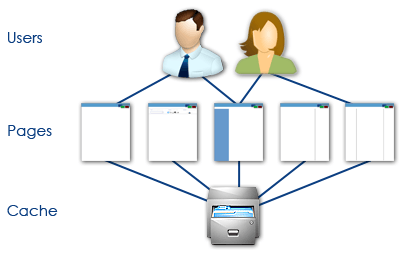Driving website traffic is one of the subject matters that I have always treated meticulously. Virtually all businesses globally thrive to drive traffic to websites and that is a very good one. The fact still remains that driving website traffic to Nigeria website is an essential and significant signal that your website is lively.
However, there is a wide distinction between preparing your website for traffic and positioning your website to control huge traffic. The former involves more of developing good content, building links and using appropriate keywords; while the latter deals more of the technicality aspects of your website.
Get 50% Discount to Master ALL Aspects of Digital Marketing That Can Earn You $2,500 - $5,000 a month (Even if you are a complete beginner!)
Our students that intentionally implement what they learn from our digital marketing course make back the entire course fee within a single month or more after completing our course because our course gives them many income generating options with unlimited earning potential with no age or location barrier. The best part is no technical skills are required.
An opportunity to change your lifestyle and make money working from anywhere in the world. The results our students get from our digital marketing course prove this could be applied to any market or country and that it is designed for any skill level and work background.
*By signing up, you agree to our privacy policy and terms of service.
That is to say this article could be difficult for a lay man to understand due to some technical terms that will be used, moving forward.
As for those that have bit knowledge about website design, they will be able to comprehend and assimilate this article.Be it as it may, I will ensure that I carry these two sets of people along with the best of my knowledge.
You may have been clamoring on how to drive traffic to your website but now you have the traffic and this time very huge. That is to say your website traffic strategy has worked.
The traffic has grown and become so huge that you haven’t position your website in such a way that you will control this huge traffic. On the long run, you are getting nervous every day, thinking of how to control the huge website traffic. Then, you are at the right place.
Click here to learn the easiest, quickest way to grow your business profit online. It's Free.How to Control Website Traffic
#1 Load balancing
One of the elements that you can use to control website traffic is load balancing. The load balancer plays a very vital role in your website infrastructure. Do not think that load balancers steal or minimize your website traffic.
This is what most people think and that is not true. Load balancers have a number of important functions to perform such as protecting your content servers from being congested; providing your website visitors with a fulfilling experience; constantly monitors your web site traffic so as to ensure that traffic is being directed to the best performing content servers as it rises towards its peak, and a host of other huge functions.
In this wise what you need to do is to use multiple components with load balancing instead of a single component, this might increase reliability and availability.
Click here to learn the easiest, quickest way to grow your business profit online. It's Free.Bear in mind that load balancing usually involves dedicated software or hardware and specifically aims to optimize resource use, maximize throughput, minimize response time, and avoid overload of any single resource
Exclude decorative elements like images or Flash wherever possible; use text instead of images in the site navigation and chrome, and put most of the content in HTML.
#2 Use HTML
The HTML is the standard markup language used to create web pages, but instead of using dynamic ones for your page use the HTLM. The HTLM places more load on your server thereby controlling website traffic. . You can also cache the static output of dynamic pages to reduce server load.
#3 Host provider
Reduce server timeout values by consulting your hosting provider (shouldn’t be too low).
When timeouts are lower the connection will be released soon, so the server will be able to handle more connections.
#4 Server hardware
Upgrading your server hardware is also an imperative way of controlling website traffic. Upgrade physical and virtual memories. But when you are controlling website traffic try to avoid high CPU usage operations like website backup cron jobs
#5 Web page caching
Caching can be enabled on a per-page basis, and you can set the length of time that a page should remain cached before being refreshed. But I recommend you to always use APC to cache PHP opcode.
When your page loads initially, your application/cache folder will write the cache file. On subsequent page loads, the system will retrieve the cache file and send it to the user’s browser. If the cache has expired, the system will delete and refresh it before sending it to the browser.
#6 Third party services
LoadImpact: Sometimes, you neglect this. Though the LoadImpact can be likened to a third party service, it also provides load testing with simulated traffic.
The essence is that you will be able to understand how much load your website can handle and what can be done to improve, and by then putting measures in place to control website traffic.
Another thing you need to know about is that LoadImpact is a cloud based benchmarking tool that offers a free test that will send a small number of concurrent users to your webpage.
CloudFlare: The CloudFlare is another third party service. It protects your website from malicious users and attacks, also used for static data caching.

#7 Website analytics
For you to start controlling website traffic, you must ensure that you constantly check your website’s analytics.
Sometimes, you may discover that there are some of your oldest posts that are still performing quite well by checking. This opportunity can be used to update it to better serve your visitors.
Did you enjoy this article? We give away 98% of our digital marketing resources for FREE. Right now, I want to prove that to you, join our community right now for FREE access to our actionable digital marketing resources to help you increase your sales and customer base online faster. It is absolutely FREE.








